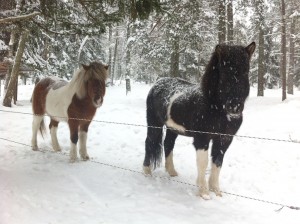Edited and clarified 2013-03-12:
Through the years we’ve had a number of questions around this and we had another discussion yesterday with a customer.
Essentially, a gyro is a device for sensing heading. Some gyros also have a rate output function included. As an extra benefit, we did include a optional rate output setting on our gyro converter.
However, a word of caution is needed. A gyro is a sensor, and as all sensors, this has some limitations. Rate of turn is actually a derivative of the heading and in spite of all good efforts, derivating a signal that in itself has some glitches and inconsistencies will enlarge these.
While it in most cases gives good enough performance on a well-kept high quality gyro synchro signal, the opposite can happen if there is some friction or “hang-ups” in the gyro, especially on a stepper type of gyro. It is fairly obvious that for each reading in a stepper gyro, there are only two possibilities, either the gyro has turned since the last reading, which will produce a rate-of-turn value, or it has not turn to the next step, which will set the rate to zero. This means that there may be a tendency for large variations in the reading of the turn rate. Most stepper gyros are geared to 180:1, which means that each step is 1/3 degree. Rate is calculated each second, so if there has been a single step during this second, this corresponds to 1/3 degree/second or 1/3 x 60 degrees/minute = 20 degrees/minute,
This means that the minimum reading of Rate-of-turn for a 180:1 stepper is 0.0 or 20.o degrees/minute and there is little we can do about it.
We have discussed to implement some kind of filtering to smooth this out, but this is to some extent against the whole idea with the rate indicator, which is to give the crew earliest possible indications of the movement tendency of the ship. Looking at it from theoretical point of view, it is not very clever to derivate a signal and then integrate it to smooth the reading.
So, as a conclusion, if the ROT function is good enough, then we are happy we could help, otherwise, don’t use it!
It should also be emphasized that this DOES NOT replace a rate gyro, which is a IMO mandatory carriage requirement device in some ships. Even if it is possible to set the output message to $TIROT it is still not generated by a rate gyro, but from a heading gyro, which is NOT designed to display rate of turn.
Setting the NMEA ROT signal is described on page 8 in the manual, menu item 3.3. It should be noted that the default setting of this for stepper gyros is Off and it should be clear anyone why this is so. We would prepared to discuss sig al processing solutions, although there is very little we can do about the physics behind it.

